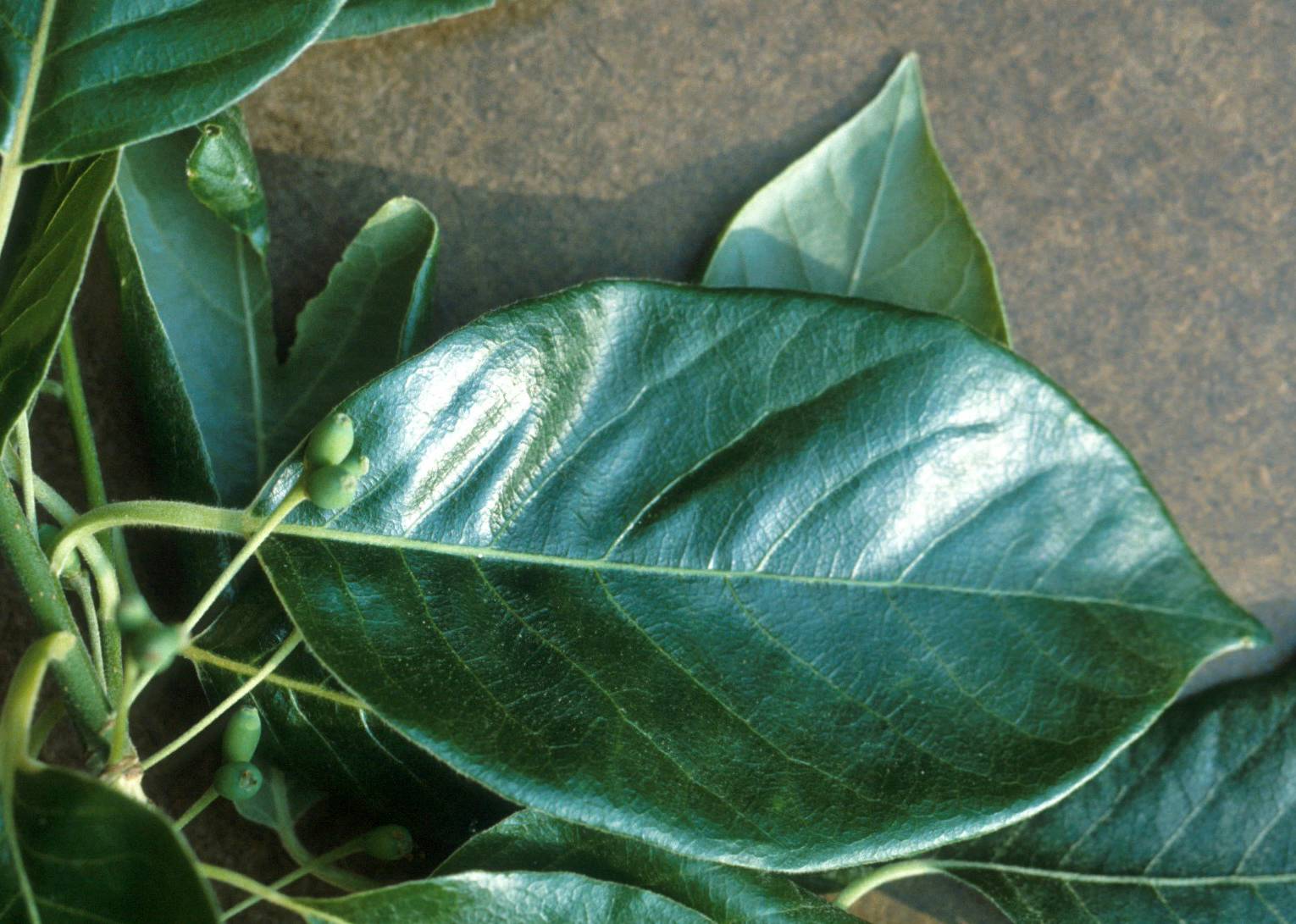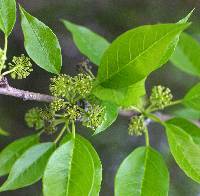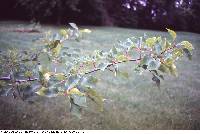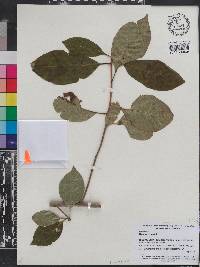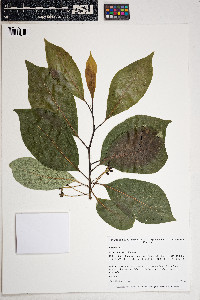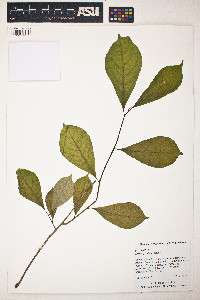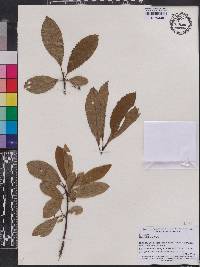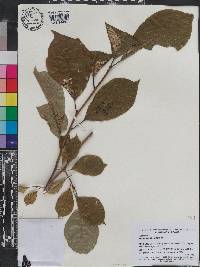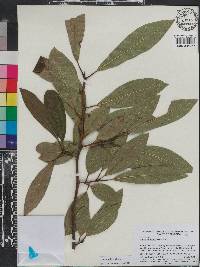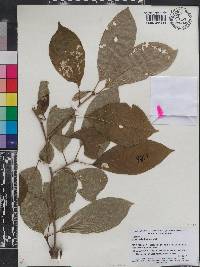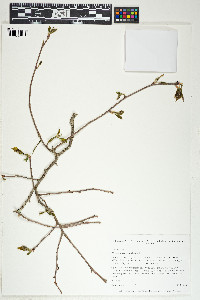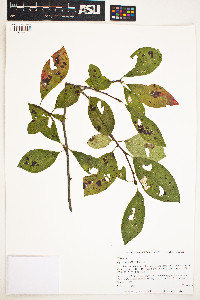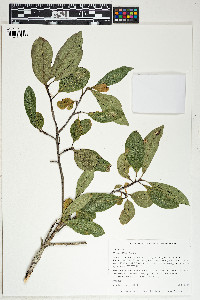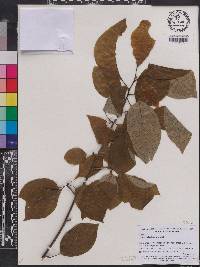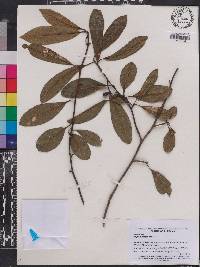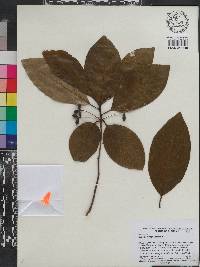Tree 10 - 18 m tall, trunk 20 - 40 cm in diameter, rarely to 40 m tall and 2 m in diameter
Leaves: alternate, very shiny and dark green above, pale and often hairy beneath, usually clustered near ends of branches, 5 - 15 cm long, 2.5 - 10 cm wide, oval to inversely egg-shaped, non-toothed to wavy, rarely with few irregular teeth. Fall color is spectacular orange, red and purple.
Flowers: either male or female, borne on separate trees (dioecious), sometimes bisexual, greenish white, on long stalks, the male flowers in almost spherical many-flowered clusters, the female flowers in small clusters.
Fruit: fleshy with a hard center stone (drupe), solitary or in stalked clusters of two or three, bluish black, 0.8 - 1.2 cm long, oblong.
Bark: dark gray to nearly black, resembling alligator hide, furrowed with long, deep, irregular ridges that are broken into blocks.
Twigs: green to light brown and hairy, becoming dark reddish brown to gray and smooth with age. Short spur shoots are common.
Terminal buds: 3 - 6 mm long, egg-shaped with a blunt to rounded tip, with yellowish to reddish brown and occasionally hairy scales.
Form: conical to cylindrical, the trunk remaining undivided far into the crown, the branches horizontal with lower branches sometimes hanging down and turning upward at the ends.
Lateral buds: smaller, pointing away from the stem.
Similar species: Nyssa sylvatica can be distinguished from other Chicago Region trees by its very shiny leaves with spectacular orange, red and purple fall color, horizontal branching, bark resembling alligator hide, and short spurs on twigs.
Flowering: early May to mid July
Habitat and ecology: Locally common in acidic boggy or peaty soils, wet woods, and along swamp margins, but is adaptable to upland sites. This species very rarely grows in Wisconsin.
Occurence in the Chicago region: native
Notes: The wood of N. sylvatica is very strong, difficult to split, and used in furniture, veneer, tool handles, docks, and shipping crates. Many birds eat the fruit. Bees collect nectar from the flowers.
Etymology: Nyssa comes from the name of a water nymph in Greek mythology. Sylvatica comes from the Latin word meaning "of the forest."
Author: The Morton Arboretum

